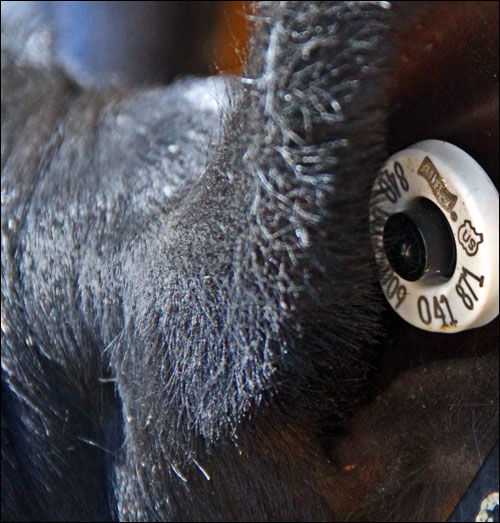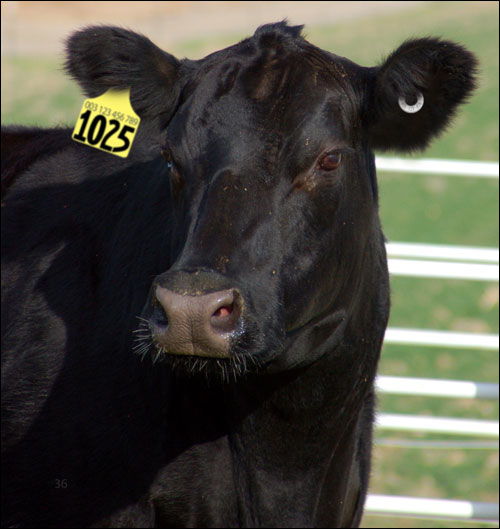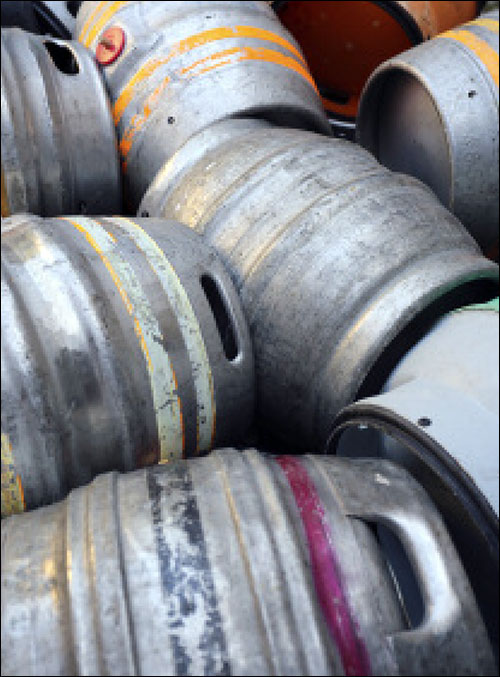Apr 03, 2015China has reportedly become the second largest consumer of expensive wine in the world. But many Chinese wine connoisseurs aren't buying what they think they are, because counterfeiters apply fake—sometimes photocopied—labels to bottles of cheap wine or replace the vintage wine in real bottles with a different product. At least half the Château Lafite Rothschild-labeled wines sold in China do not come from France's Bordeaux region, according to Chinese officials, but are made on boats moored in international waters. "There seems to be a new swell of counterfeit wines and spirits in emerging markets like China for very expensive wines," says Eric Przyswa, director at risk05, which conducts technology-oriented analysis of counterfeit issues related to supply-chain and consumer consumption, among other areas.
To help combat fraud, anticounterfeiting identification technology company Selinko is developing an e-commerce website for Chinese consumers. The site will sell wines that use Selinko's Near-Field Communication solution, which leverages an Inside Secure NFC chip combined with a Selinko platform and patent-pending processes to ensure authenticity. "When you go online to order a product, you will have access [through a secure pop-up] to the digital certificate attached to the product," says Gwennaëlle Festraets, VP of marketing and communications at Selinko. "When the bottle is delivered at home, you can scan its NFC tag [with an NFC-enabled mobile phone] to make sure they match. If confirmed, only at that time will the payment be released."
Bodegas Toro Albalá, a luxury vintage and dessert winemaker in Spain's Córdoba countryside, and a major U.K. wine and spirits distributor (as yet unnamed) are the first to have signed up to sell through the platform. "The object is to give the Chinese market a wide range of luxury wine and spirits brands where they can be sure the product is genuine," Festraets says, adding that product authenticity is the first concern of Chinese online shoppers.
Bodegas Toro Albalá is also using Selinko's LabelSeal solution, to ensure authenticity of its bottles sold to real-world consumers and to provide a means to interact with consumers. "I do believe that in the future, wineries will choose the NFC system as it is a product guarantee for the consumer and also for the ease of information that can be offered," says Antonio Sorgato Godeau, the firm's export manager.
Other RFID providers are developing solutions to improve supply-chain efficiencies and inventory management. Like vintage wines and aged spirits, it may take a little time for wine and spirits makers to determine which applications deliver the best business value. Meanwhile, an RFID asset-tracking solution could take hold in the brewery industry.
Authenticity and Communication
Bodegas Toro Albalá's main facilities, one in Aguilar de la Frontera and another in Montilla-Moriles, "decided to apply the Selinko system in the high range of our wines to ensure authenticity to the buyer of these exclusive wines," Godeau says. The company is launching the solution in April, tagging its exclusive 1929, 1955 and 1965 vintages. While the cost to add the NFC chip is high, he says, "the profit margin allows modifications in this type of product, like other luxury goods."
The LabelSeal consists of a high-frequency 13.56 MHz NFC-compliant tag embedded into a wine bottle's label, an application for NFC-enabled phones to capture the label's ID number, and a server to manage the collected data. A mobile application lets customers with NFC phones read the tag embedded in the winemaker's label; if the bottle is authentic, its certificate of authenticity and unique serial number will be displayed. The NFC chip features asymmetric encryption technology for a tamperproof digital certificate that is impossible to be copied and placed on another tag, even by Selinko, Festraets says.
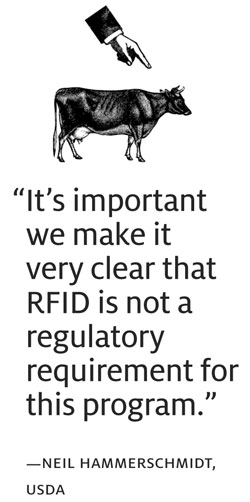
Selinko's mobile app also allows consumers to register, so they can learn more about the wine and enjoy various brand services. A My Wine Registry feature lets users create personal notes about a particular wine and link those comments directly to their social-media networks. "Everything moves by the social network," Godeau says, "and so does the consumer." Given the proliferation of smartphones, he adds, putting an NFC tag on its bottles provides a great way for Bodegas Toro Albalá to communicate information faster.
Château Le Pin, a French Bordeaux winemaker, adopted the Selinko LabelSeal solution a couple of years ago to authenticate its vintage 2010 bottles. It's now NFC-tagging its 2011 and 2012 vintages, Festraets says. While it's an expensive investment, the winemaker sees the value, she says. "They are very convinced by the fact that they reduced a lot of the issues they had with counterfeiting," she explains, adding that such issues can jeopardize a wine's status, which damages the company's image and revenue.
To address the issue of replacing real wine with fake wine in real bottles, Selinko and Inside Secure are launching the CapSeal anti-refill solution, which also can be used for authentication of purchase at retail stores or online. It uses the same NFC chip offered in the behind-the-label option, but the tag is positioned under the bottle capsule (the metal or foil protecting the cork) and connected to an antenna inserted just above the cork. The tag is mechanically deactivated if someone tampers with the capsule and/or cork.
A consumer or supply-chain partner can use an NFC smartphone to read the tag and then check Selinko's mobile app to confirm the bottle has not been opened. One of the top five international spirit brands plans to use CapSeal in its Cognac line, beginning with products destined for sale in China in 2016, Festraets says, noting that she isn't yet at liberty to disclose the brand.
Another company, Thinfilm, recently introduced the Connected Smart Bottle, which uses printed sensor tags with Thinfilm's OpenSense technology, to dynamically detect, with the tap of an NFC smartphone, whether a bottle is sealed or has been opened. To ensure authenticity, the company says the tags are permanently encoded at the point of manufacture and cannot be copied or electrically modified. "OpenSense provides two states of NFC interface," says Jennifer Ernst, Thinfilm's chief strategy officer. "When the tag is sealed and product is sealed in factory condition, you get one identifier, and if the factory seal has been broken, you get a different identifier."
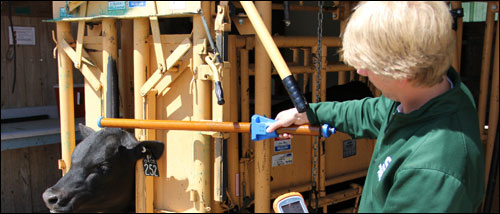
The Connected Smart Bottle can also be used to deliver marketing content to consumers. Those reading the tag at a retail store before purchase, for instance, may get a promotional offer, while those reading it after purchase may get a cocktail recipe or other exclusive content. "They can get tasting notes, for example, or once they've opened a bottle, a brand could set and send a time to say how long it should be open and breathing," Ernst says. "There's an interactive experience for the consumer on brand value."
In fact, Thinfilm worked with Diageo Technology Ventures to use the technology to serve personalized communications to its brand-alcohol consumers, unveiling a prototype Johnnie Walker Blue Label Smart Bottle at Mobile World Congress in March. "Diageo focuses on the consumer experience and campaigns around the use of NFC in marketing," Ernst says, noting an NFC indicator on the bottle will alert consumers to the tag's presence. "It's part of engaging consumers in the experience."
Laxcen, a Hong Kong tag and label manufacturer, developed a passive EPC Gen 2 UHF RFID label that can be used to authenticate wine bottles. Each tag's ID number is linked to data regarding the wine, including when and where it was bottled. Retailers can use a handheld reader to verify that a bottle is genuine; counterfeit bottles will have no label or a broken label, indicating the bottle was opened. A prominent Chinese wine company is using the solution for its most costly premium brand, says Lawrence Lin, Laxcen VP of sales and marketing. "The counterfeit issue is severe in China, especially for those expensive wines," he says.
Laxcen is working on a "better tamperproof tag, hybrid [NFC-UHF] tag as well as an encrypted IC for next-generation tags," Lin says. "One of the advantages of adding the NFC option is that it can work with a mobile phone instead of a specific reader. Half of China's mobile phones now come with the NFC feature."
Supply Chain Efficiencies
Some authentication solutions can also be used to improve supply-chain efficiencies. "A few premium wine companies are adopting EPC tags primarily for inventory management [both out of the factory and at the distribution center]," Lin says.
Thinfilm's technology can also be used to track a bottle's movements across the supply chain, Ernst says. "At each read, you can pick up the date and the time scanned, the GPS coordinates and unique ID associated with that particular model, as well as the state of the sensor device on the tag," she says. Customers can know when products reached their destination, she says, and it could help spot any diversion along the way.
For research company Epix, the business case for RFID in the wine and spirits industry revolves around tracking and validating the number of bottles being received in bulk as crates come through the dock door and make their way along conveyor belts, and in counting bottles put on shelves without requiring a close read, according to Brian Weeks, managing director at Epix and at Interactive Product Solutions, which holds the worldwide marketing rights to the technology. Epix recently began working with manufacturer r-pac International to produce CapTag, a near-field passive UHF tag that attaches beneath a wine bottle's capsule.
"Retailers want the ability to count the stock on their shelves, and they may have 10 bottles deep on some shelves," Weeks says. CapTag, which has a 36-foot read range when a bottle is standing upright, can handle that with a handheld UHF reader even with metal shelving, he says. The technology also can be used with EPC Gen 2 UHF readers to receive bottles at the back of the store in bulk, he says, "to make sure each case has the true number of bottles to update inventory in real time."
Weeks thinks the solution also could be used by wine-making countries, such as Bulgaria, Italy, Portugal and Spain, that must apply a tax strip over the top of each bottle, to prove taxes were paid on that bottle. "We can include an RFID inlay into that tax stamp so you can remotely read inside sealed cartons and cases," he says. "It's useful in terms of receiving single cases to validate that you have the correct number of bottles with a tax stamp on each bottle. It can be an all-purpose tag for inventory control, authentication and bona fide tax stamp in one go."
Selinko is considering adding temperature tracking to its NFC anticounterfeit technology, so producers and customers could check that products stayed within an appropriate temperature range on their journey from manufacturer to customer. Many customers have asked about the option to have "on one chip with one technology the ability to make sure a product is genuine and also that temperature is respected, especially for wine and spirits," Festraets says. That has appeal to Bodegas Toro Albalá's Godeau, who says too-high temperatures can be a problem with sweet and high-density wines: "The wine expands and pushes the cork."

Cain Vineyard & Winery, in Calif., and Domaine Ponsot, in France, have begun using eProvenance's Fine Wine Cold Chain solution to monitor select shipments. RFID-enabled sensors embedded in wooden wine cases monitor temperature during transport and storage from the producer through to the final consumer.
The second-generation sensor technology is compatible with the NFC protocol, so customers can use NFC smartphones to access eProvenance's database of temperature and humidity history for a case of wine. The sensors have a 15-year battery life for long-term temperature monitoring of fine wines, which move through distribution and may then be cellared for a long time, says Louise Domenitz, the firm's marketing director.
Customers want them for scenarios such as auction shipments, she says, "so the wine's story stays with the case as it moves through the auction to a consumer or to a seller who can resell it with its long-term story of provenance."
The value, Domenitz says, comes from using eProvenance's monitoring service to analyze the temperature and humidity data to determine whether a wine's quality has been damaged. But, she adds, it also can be used proactively, in combination with eProvenance's Global Tracker technology, to monitor temperature en route in real time. As long as the sensor is in communication with a cell tower, a wine producer or distributor can be alerted to a problem, and in turn reroute a truck to the nearest warehouse, where the issue can be resolved and the shipment saved.
eProvenance recently introduced The Bottle Tag, a self-adhering RFID tag designed to identify individual bottles of wine that are associated with a case once they are separated from the case. It can be useful, Domenitz says, if a retail or restaurant customer wants validation that the wine shipped under excellent conditions. A store associate or sommelier could use an NFC phone to communicate with the tag to get the bottle's provenance. "Our primary focus is not on anticounterfeit," she says, "but certainly this could provide some anticounterfeit assurance, to authenticate that this bottle came from this case that came from this winery."
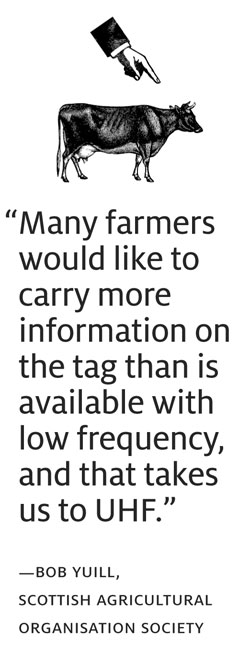
Identifying the Business Case
As RFID providers develop applications to target specific issues, it's up to wine and spirits makers—and their supply-chain partners—to determine which business cases deliver the strongest return on investment.
Leveraging technologies such as NFC for authenticating very high-cost wines or spirits is a way for luxury producers "to show to the consumer that they are at the avant-garde of protection and security," risk05's Przyswa says. "They're not just protecting wine but also giving a good image of the company." But, he adds, high-quality, high-priced wine can have a very long life, and established wineries, particularly in France, wonder whether RFID and NFC technology will last as long.
"We think we are delivering business value [with the CapTag], which is counting thousands of bottles in a matter of minutes in a retail store environment, and giving an accurate count of every bottle in there," says Weeks at Epix. "That's worth a lot to retailers."
With solutions such as Thinfilm's Connected Smart Bottle, a manufacturer can track shipments through the supply chain. "If there is diversionary activity," Ernst says, "that means the money is in other parties' pockets rather than the brand's."
A Complete Solution for Tracking Beer Kegs
Heineken and three of the top five global keg manufacturers are among the companies taking advantage of an RFID asset-tracking solution developed for the brewery industry by HID Global and Visibility Asset Management Solutions. It includes HID Global's ultrahigh-frequency tags, and Visibility's fixed and handheld readers and cloud-based software platform.
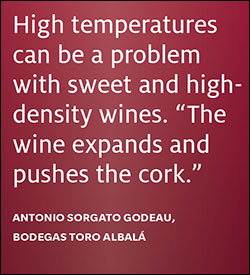
Companies can use the solution to keep track of what kegs are onsite, which have been filled and shipped, and the contents of individual kegs. The solution also tracks each keg's journey through the supply chain, so companies know how long kegs remain at a bar or restaurant, and when they are ready for pickup. In addition, it can be used to manage a keg's lifecycle, including maintenance schedules. This knowledge helps companies accurately forecast asset availability and can potentially reduce capital investment in new kegs during peak periods, says Jon Quinn, Visibility's managing director.
Fixed RFID readers can consistently read 100 percent of kegs on pallets as they are transported in bulk on forklifts to warehouse dispatch areas, as they are loaded onto vehicles, and as they enter or leave central warehouse or depot locations, says Marie-Françoise Glotz-Bartley, VP of sales at HID Global. "UHF gives the best read distance," she says. "When there are 50 kegs on a truck, you can't afford to miss one as the driver is going out, because the keg is generally more expensive than its contents." Handheld readers are used to identify individual kegs at a bar or restaurant to confirm proof of delivery and return to a collection depot.
Franke Beverage Systems, a leading provider of stainless steel beverage containers to brewers and third-party companies that rent the kegs to brewers, offers to equip the kegs with HID Global UHF tags. Nearly a decade ago, Franke began offering its customers the option of using low-frequency tags to track their kegs. The company still offers that option, because LF tags are cheaper, but it advocates UHF for its support of bulk reads that enhance logistics operations beyond simply reading one keg at a time on a conveyor line, says Alexander Brand, Franke's president and CEO.
That said, Franke doesn't expect to move all its customers to UHF en masse. Roughly 85 percent of its U.K. customers, for example, use keg-mounted RFID tags, and only about 10 percent are leveraging UHF technology, Brand says. But most customers just getting started with RFID tend to choose the UHF option, he says, because they understand the payback of the associated infrastructure and information-gathering software: "If you really know where you send the kegs and the state they are in, it makes a difference."
Visibility worked with Franke to develop a software module for Global Network Keg Services (GNKS), which Franke introduced to support maintenance activities for kegs that have a 30-year warranty. "It gives GNKS repair partners a reliable system that identifies kegs as being, for example, 7 years old and requiring a change of a rubber part in the fitting, as it's most likely wearing out by that time so the risk of leakage increases," Brand says.
Brand estimates that 90 percent of brewers worldwide don't know which keg went to which customer and when it returned to its own fleet. "There is massive potential in the market to just achieve the basics," he says. Beyond that, Brand envisions a day when the RFID keg connection will extend through to bars and restaurants that can tune into temperature and other data supplied by a neutral party, such as Visibility. End users could know at the tapping point whether the right CO2 pressure has been applied for the particular brand of beer coming from the keg, and how many liters are left so they could get a jump on changing the keg.

